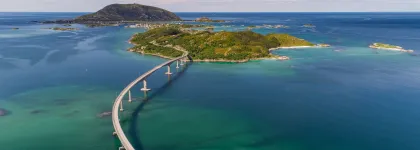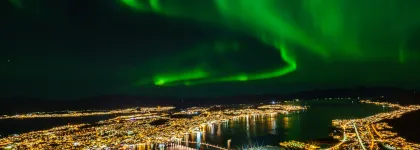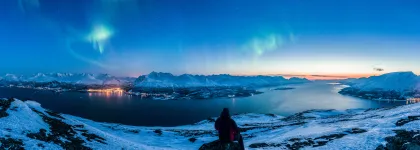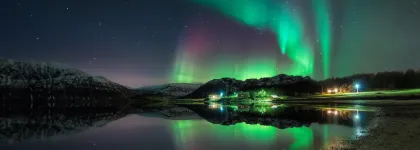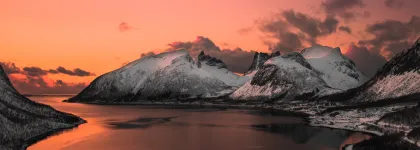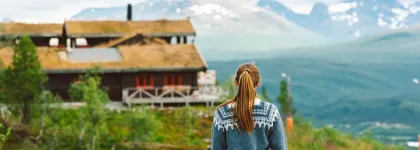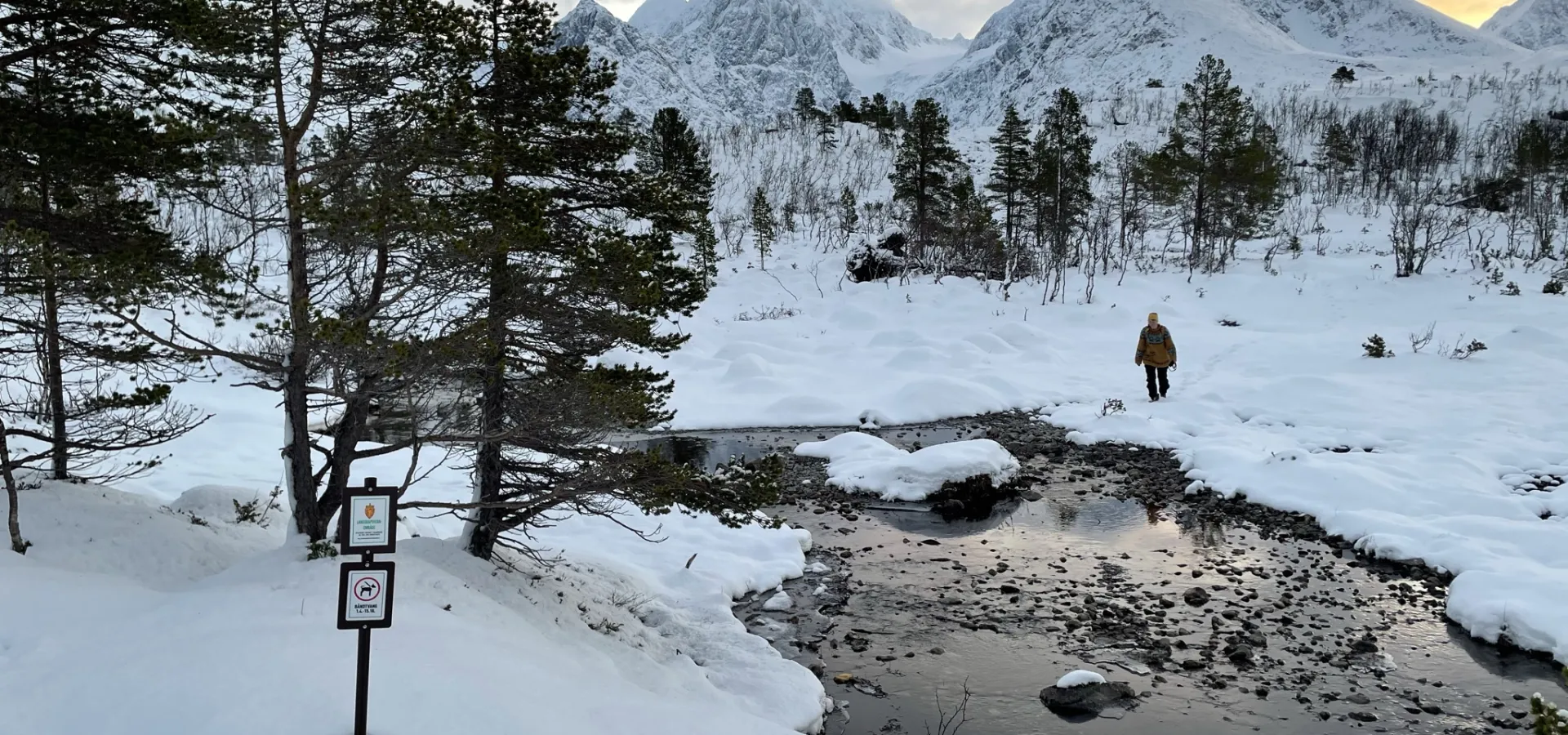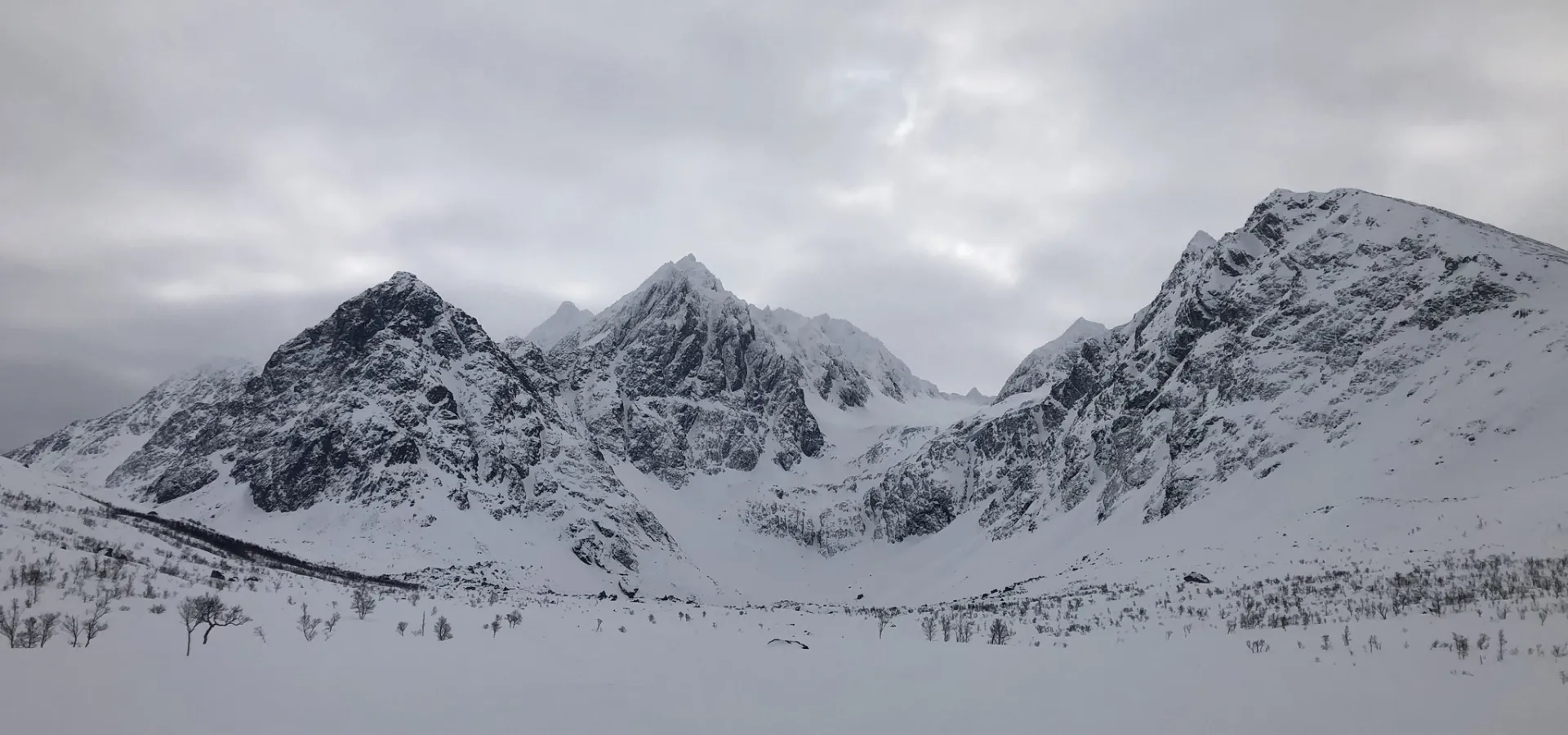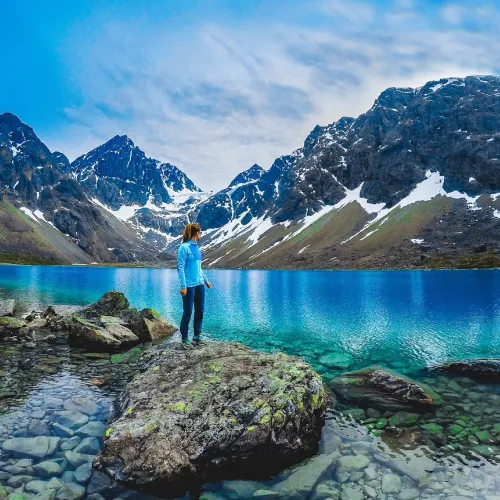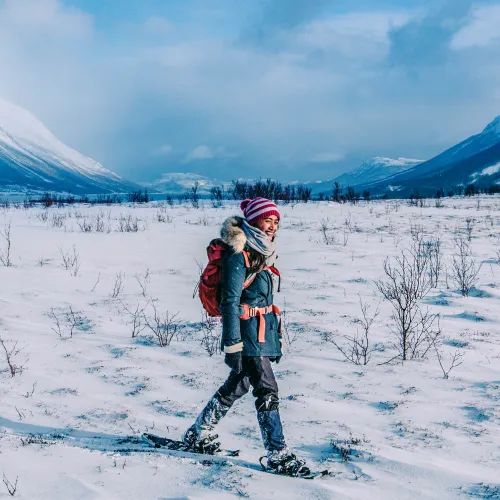Think you've got the grit for a winter adventure? Blåisvatnet, known for its stunning blue lake in summer, transforms into a whole different scene in the winter. While the summer months draw in crowds for leisurely hikes, the snowy season presents a demanding trek for experienced winter hikers only.
We have received several inquiries about hiking to Blåisvatnet in the winter time. It is possible to go there in the winter, but the winter hike is not as spectacular as doing the hike in the summer. We would rather reccomend some other trips in the winter (you will find some suggestions further down on this page).
If you despite this still want to do the hike: there are a few precautions to take before setting off on the trip.
Be Forewarned: No Blue Beauty Here
Forget the postcard-perfect blue water. Blåisvatnet will probably be completely buried under a thick blanket of snow and ice until early June. All you'll encounter is a vast expanse of white – a far cry from the summer spectacle.
Skiing or walking with snowshoes to Blåisvatnet
Once the snow is deeper than your boot, you can NOT do this trip without skis or snowshoes.
If you want to do the hike, we strongly recommend using skis to get around.
Snowshoes can also be used, but be aware that the trip may be more demanding, especially for longer distances. It is only in the summer and early winter, when there is only a little snow, that it is possible to get there on foot. Early winter it can be icy and we recommend to use spikes.
Please note that the trail markings and descriptions are primarily designed for summer and autumn hiking, so you may encounter sections with less obvious markings. As the trail is not clearly visible, you head in the general area towards the mountains you see some distance away.
The roundtrip hike to Blåisvatnet is approximately eight kilometers. During the summer, it typically takes about 1.5 hours to reach the lake and one hour to return. The lake is situated at an altitude of 189 meters, and the overall terrain is fairly easy and flat. However, on the final stretch, you'll need to navigate over some loose scree and larger rocks. Beware when walking that you do not accidentally fall inbetween the scree and larger rocks.
Safety First: Winter Hiking Tips
Heading out for a winter hike? Make sure you're prepared!
Pack the essentials: warm clothes, food, map, and compass. Before you go, check the avalanche forecast at www.varsom.no and the weather forecast www.yr.no. Watch out for cornices, avalanche paths, and hidden crevasses. If you're unsure about anything, ask a local. If you plan on having a campfire, use the existing fire pits and dont throw any trash in the nature.



